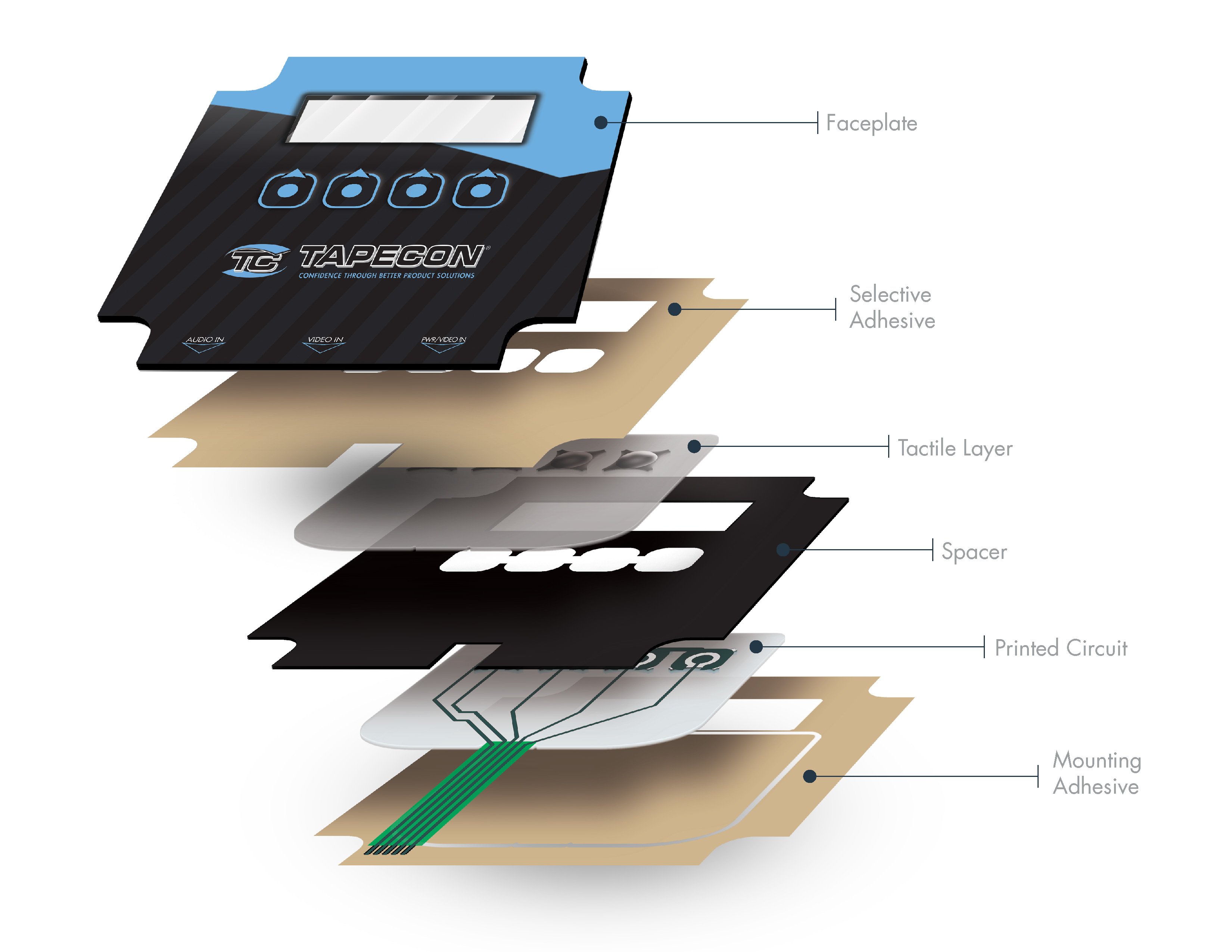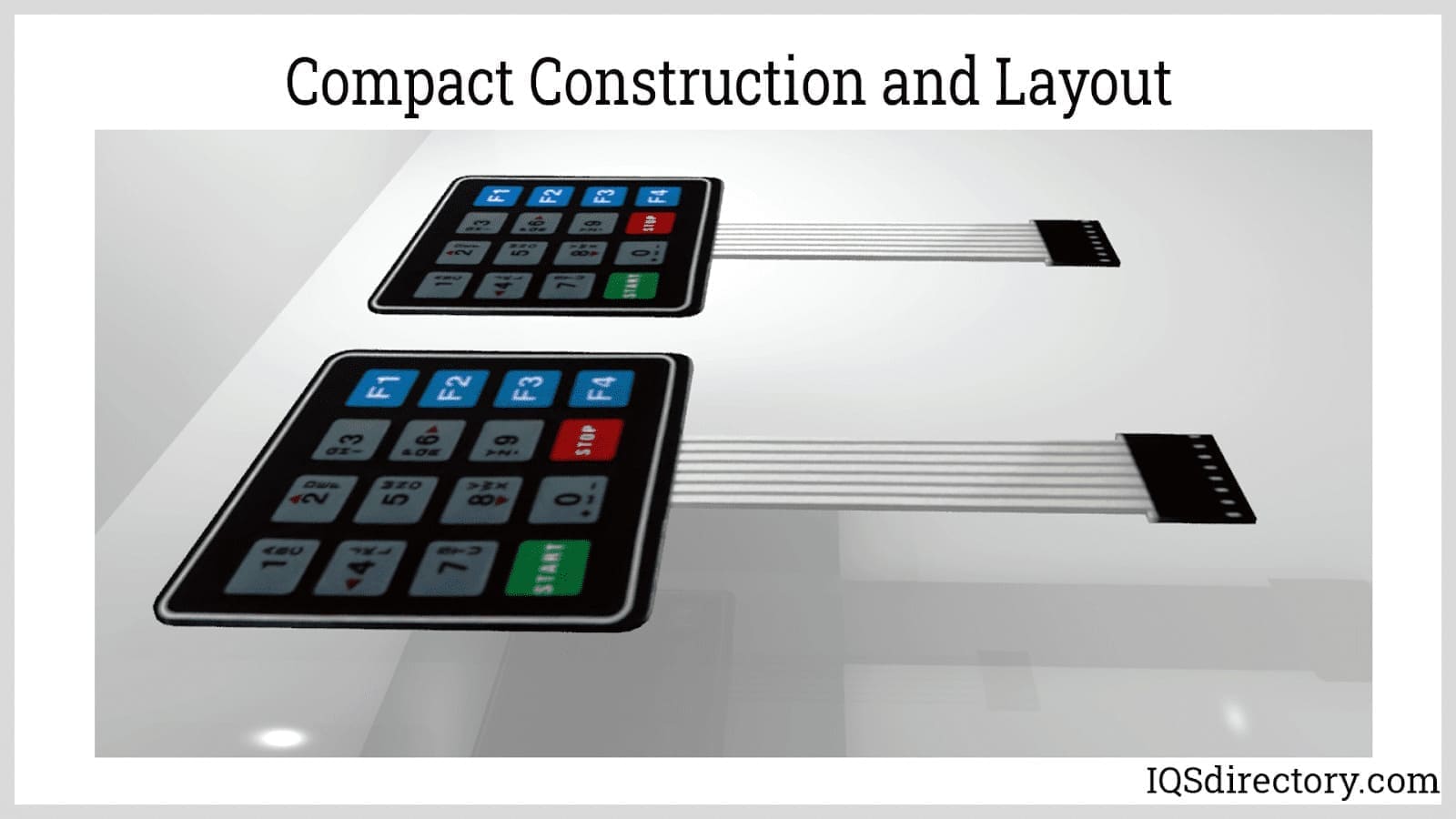Crucial Functions to Search For When Picking a Membrane Switch
Crucial Functions to Search For When Picking a Membrane Switch
Blog Article
Understanding the Capability of Membrane Switches for User Interface Devices
The capability of membrane switches represents a significant development in interface layout, combining effectiveness with aesthetic flexibility. These buttons run with a multi-layered framework that converts customer interactions right into electric signals, allowing for both small layouts and durability versus ecological elements. As markets increasingly focus on user experience, recognizing the subtleties of membrane switch innovation ends up being vital. What ramifications do these improvements hold for future applications, and just how might they redefine user interactions across various devices?
What Are Membrane Layer Switches?
Membrane layer switches are cutting-edge user interface devices that promote individual communication with digital devices. These functional components include multiple layers, including a visuals overlay, spacer, and a published circuit layer. The style permits a seamless integration into various digital devices, boosting both the visual and useful elements of interface.
Membrane buttons are commonly utilized in a large range of applications, from household home appliances to industrial machinery and medical tools. Their construction usually features a thin account, making them a perfect option for portable layouts. The responsive feedback provided by these switches can be engineered to satisfy certain customer choices, ensuring efficient communication between the user and the device.
Longevity is one more substantial benefit of membrane layer buttons, as they are immune to dirt, moisture, and chemicals, which boosts their lifespan in requiring settings. Additionally, these switches can be personalized in terms of shape, size, and visuals style, permitting branding and user-specific functions. On the whole, membrane layer switches over represent a functional service for improving customer experience in electronic tools, incorporating capability with visual appeal in an efficient manner.
Just How Membrane Layer Changes Job
Operating on a straightforward concept, membrane layer changes use a layered building and construction to sign up individual input successfully. Each switch contains multiple layers, including a published circuit layer, a spacer layer, and a leading visuals layer, which are developed to interact effortlessly. When an individual presses the top layer, it compresses the spacer layer, bringing the conductive elements of the circuit layer into contact with each other.
This call produces a closed circuit, indicating the device to implement a certain function. The design permits different setups, including responsive comments, which can boost the customer experience by supplying a physical feeling upon activation. The materials used in membrane layer buttons usually consist of adaptable substrates, such as polyester or polycarbonate, which ensure toughness and strength against damage.

Secret Advantages of Membrane Switches

An additional considerable benefit is their density. Membrane layer switches are slim and lightweight, which allows producers to conserve space in their tools without compromising functionality. This attribute is particularly advantageous in applications where weight and quantity are vital considerations.
Furthermore, membrane buttons are immune to dust, wetness, and chemicals, boosting their longevity. This resilience expands their life expectancy and minimizes the need for regular replacements, resulting in cost savings over time.
Furthermore, the tactile responses offered by membrane switches can be optimized to boost user interaction. They can consist of functions such as elevated buttons or distinct clicks, boosting usability and customer experience.
Applications Throughout Industries
Interface gadgets making use of membrane layer switches prevail in a broad selection of sectors, showcasing their versatility and capability. Membrane Switch. In the clinical field, membrane buttons are essential to devices such as analysis equipment and patient surveillance systems, where their longevity and convenience of cleaning are critical for preserving hygiene criteria. In a similar way, in the vehicle industry, these switches are used in control panel controls and infotainment systems, offering a streamlined and modern user interface for individuals.
Additionally, the consumer electronics sector gain from membrane buttons in appliances and portable tools, where portable layout and user-friendly user interfaces enhance customer experience. Industrial applications additionally utilize membrane switches for control panels in equipment and automation systems, stressing their effectiveness and resistance to extreme environments.
In the aerospace and protection sectors, membrane buttons are utilized in cockpit controls and devices, where dependability and efficiency under severe conditions are extremely important. In addition, the pc gaming industry increasingly incorporates membrane switches in controllers and game equipments, adding to an appealing individual experience. On the whole, the flexibility of membrane switches allows their extensive usage across countless fields, highlighting their value in modern-day interface style.
Future Trends in Membrane Layer Switch Modern Technology

Additionally, making use of anchor advanced products, such as polycarbonate and polyester movies, is expected to increase, giving boosted resilience and resistance to environmental stress factors. These materials add to the overall durability of membrane switches, making them suitable for harsher commercial applications.
In addition, the incorporation of wise innovation, including IoT connection, will make it possible for membrane switches to connect with various other devices and systems, helping with a more interactive user experience. This fad aligns with the growing demand for smart devices across different industries, from healthcare to consumer electronics.
Finally, modification options are anticipated to increase, permitting manufacturers to develop bespoke options customized to specific customer needs and choices. These advancements will position membrane layer visit site buttons as vital parts in the advancement of interface modern technology.
Conclusion
In verdict, membrane changes stand for a pivotal advancement in customer interface innovation, offering a reputable and functional solution for varied electronic applications. As advancements in material science and touch noticing innovations continue, the performance and applicability of membrane layer buttons are expected to increase, strengthening their value in modern-day electronic click here for more tools.
Report this page